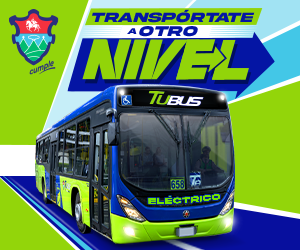A recent string of drug seizures linked to Nicaragua suggests smugglers are moving cocaine through the country, despite official rhetoric that it is not a transit hub.
On October 12, authorities in El Salvador made two separate arrests of Nicaraguan nationals after their tractor-trailers were found to contain cocaine, according to the Attorney General’s Office. Officials said both drivers had begun their journeys in Nicaragua.
A search of one truck — stopped at a checkpoint near the city of Zacatecoluca in the southern La Paz department — turned up 885 kilograms of cocaine in the fuel tank, according to prosecutors.
The same day, authorities discovered 633 kilograms of cocaine hidden in the gas tank and axle shaft of a truck entering El Salvador via the El Amatillo land crossing near La Unión, according to reports from El Diario de Hoy. The driver was headed to San Salvador, though officials said the city was unlikely to have been his final destination.
In total, over 1.5 tons of cocaine was seized, according to La Prensa.
Smaller-scale seizures have also occurred in Nicaragua of late. On October 20, a man was detained at a borderland checkpoint in Peñas Blancas after 77 kilograms of cocaine were discovered in his truck, authorities announced in a news release. A day later, Nicaraguan police said they arrested a man in the department of Chinandega who was attempting to transport some 40 kilograms of cocaine from Costa Rica to Honduras.
The nation has seen a string of similar seizures in recent months, most often in Peñas Blancas, which borders Costa Rica.
In September, US President Donald Trump included Nicaragua in a memorandum identifying the world’s major drug-producing and drug transit countries.
Nicaragua President Daniel Ortega countered in a speech this month in which he said that his country had fewer drugs going through it than many neighborhoods in the United States.
InSight Crime Analysis
Recent seizure figures suggest that traffickers are moving a glut of South American cocaine north through Central American countries, and it stands to reason that Nicaragua would serve as a smuggling corridor just like its neighbors.
To the south of Nicaragua, Costa Rica is soon expected to break its record for annual cocaine seizures, having intercepted close to 47 tons of the drug this year alone.
Honduras, which shares a remote jungle border with Nicaragua, has intercepted more cocaine during the first seven months of this year than all of 2019, indicating a resurgence of one of Central America’s most important cocaine routes despite border shutdowns and transport restrictions due to the coronavirus pandemic.
Much of the cocaine trafficked through Central America comes from Colombia, which has seen record levels of production in recent years.
Nicaragua’s government has long maintained that the country is not a transit point for drugs. Official news releases mostly tout small seizures associated with the country’s “Retaining Walls” (Muros de Contención) security initiative. The strategy intends to combat organized crime, money laundering, human trafficking and contraband through forging a monolithic national security block between the military and other state institutions.
Elvira Cuadra, a Nicaraguan national security expert, told InSight Crime that “it is impossible to think that organized crime groups avoid passing through the country under the assumption of the ‘retaining wall’ policy that the government has been implementing for several years.”
Local criminal organizations in Nicaragua respond to the needs of the transnational drug trafficking networks, she added.
In its most recent International Narcotics Control Strategy Report, the US State Department dismissed Nicaragua’s claims that it was successfully impeding the smuggling of drugs, weapons, currency and people within its borders, concluding that Nicaragua’s efforts “remain under-resourced, without dedicated air assets, technical capacity, training or accountability.”
In the first nine months of 2019, Nicaragua’s government reported conducting 4,786 operations that targeted local and international drug trafficking organizations, a significant decrease from the nearly 8,000 interceptions carried out in 2017, according to the State Department report.
Cocaine continues to flow up Nicaragua’s Caribbean coast. Nicaraguan nationals have been implicated in at least four maritime drug seizures since last December, usually in collaboration with citizens from other countries along well-established Caribbean trafficking routes.
The State Department reported that the Ortega government’s focus on repressing ongoing socio-political turmoil has diverted a significant number of resources away from counternarcotic operations. Since 2018, the Ortega government has been embroiled in a political crisis after facing widespread protests. The country also faces a massive economic downturn.
Criminal groups have been adapting to the difficulties the situation has presented, Cuadra noted.
“This has made them find new ways of operating to carry out their trafficking activities,” she said, adding that recent interceptions suggest “major [drug] operations” are currently taking place in the country. (https://www.insightcrime.org/news/analysis/nicaragua-cocaine-flows/)






































